High school student digs up 34-million-year-old whale skull on family farm

High school student finds 34-million-year-old fossil
At just 16 years old, Lindsey Stallworth got to experience something most paleontologists can only dream of: unearthing a whale skull believed to be about 34 million years old.
MOBILE, Ala. - Lindsey Stallworth hoped to find some cool shark teeth when she took her high school science teacher to hunt for fossils on her family’s farm in June.
What 16-year-old Stallworth and Dr. Drew Gentry found instead was something some paleontologists can only dream of: A 4-foot-long whale skull believed to be about 34 million years old.
In an interview with FOX TV Stations, Stallworth said she’s been collecting fossils on her family’s property since she was a small child.
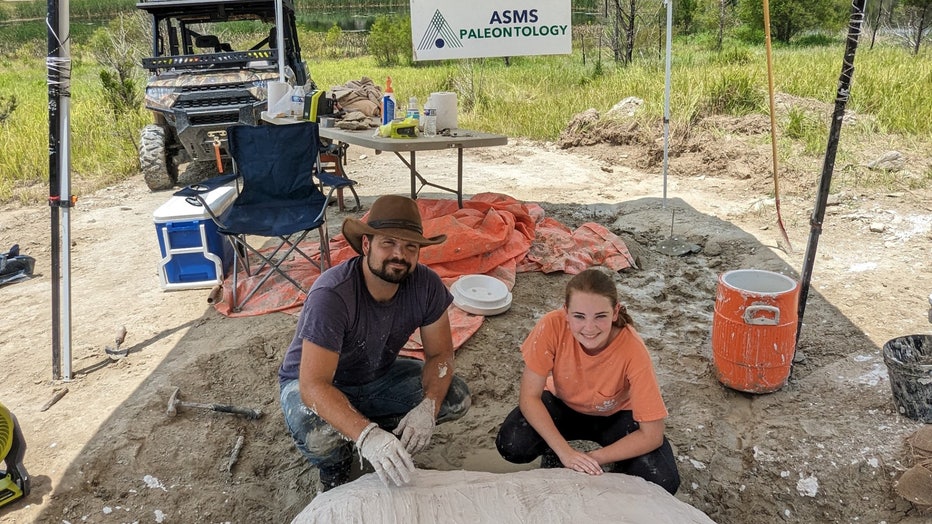
Dr. Drew Gentry and Lindsey Stallworth at the excavation site where they unearthed a 34-million-year-old whale skull (Alabama School of Mathematics and Science)
"We've always known they were there," Stallworth said. "It's been like our family thing to go walk the property and find the shark teeth, the vertebrae and the shells. And it's just something we always did all as a group. We celebrated it when you found your first shark’s tooth."
READ MORE: Fossil of 94-million-year-old sea creature found in Utah
When she took beginners biology with Gentry at the Alabama School of Math and Science (ASMS) in Mobile, she learned Gentry is a paleontologist who’s taken part in several large excavations in Alabama. He most recently made headlines for his research into a previously unknown species of prehistoric giant freshwater turtle.
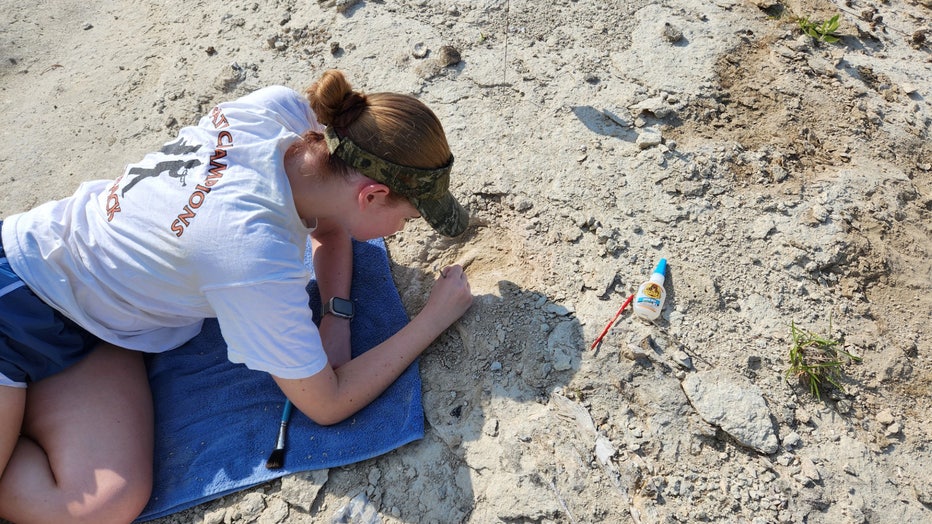
Lindsey Stallworth digs at the excavation site where they unearthed a prehistoric whale skull (Alabama School of Mathematics and Science)
"So I brought a little plastic bag full [of shark teeth] and I handed it to him," Stallworth said. "And he recognized one of them as an uncommon sharktooth, and he wanted to know where it came from."
That interaction led to a summer excavation on Stallworth’s family land about 80 miles from where she goes to school in Mobile. Gentry said they’d only been digging for about 30 minutes when they found tiny bone fragments that led them up a hillside to something bigger.
READ MORE: Dinosaur fossils unearthed in Chile may give insight into deadly asteroid strike
"We didn't actually know what we'd found at first," Gentry explained. "There was only a small portion of the skull actually exposed on the surface, and we spent about three or four days digging away with very small dental picks and tiny hand chisels until we uncovered more of the lower jaw of the animal."
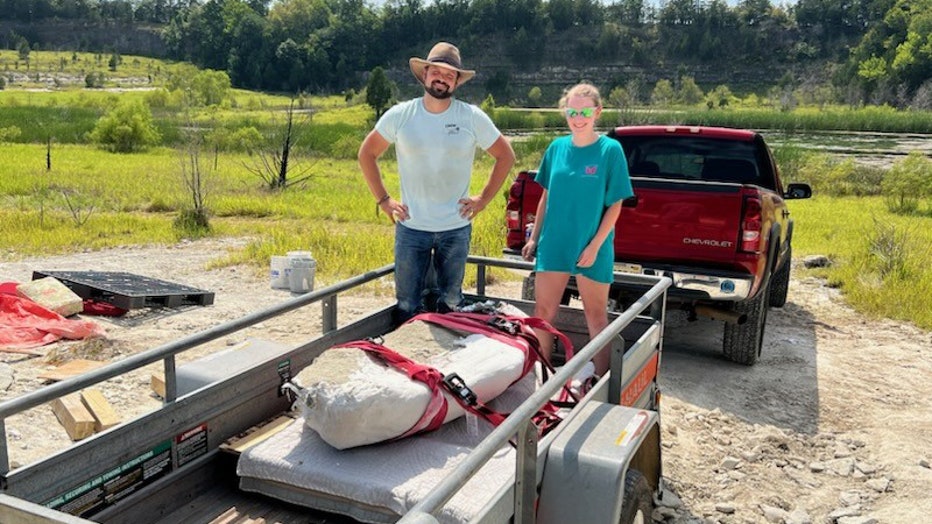
Dr. Drew Gentry and Lindsey Stallworth at the excavation site where they unearthed a 34-million-year-old whale skull (Alabama School of Mathematics and Science)
Gentry sent photos of the jaw to several of his colleagues around the country. Two of them were able to identify it as a carnivorous whale, he said. It could take years to learn the exact species, but they know it’s closely related to the Basilosaurus cetoides, the Alabama state fossil.
From there, it would be another month of digging in excruciating Alabama heat to bring the skull to the surface.
"It was definitely not the not the easiest excavation," Gentry said. "And just when we thought we had an idea of how the excavation was going to go, this whale had a way of sort of throwing us a curve."
"[It’s] had several nicknames," Stallworth joked.
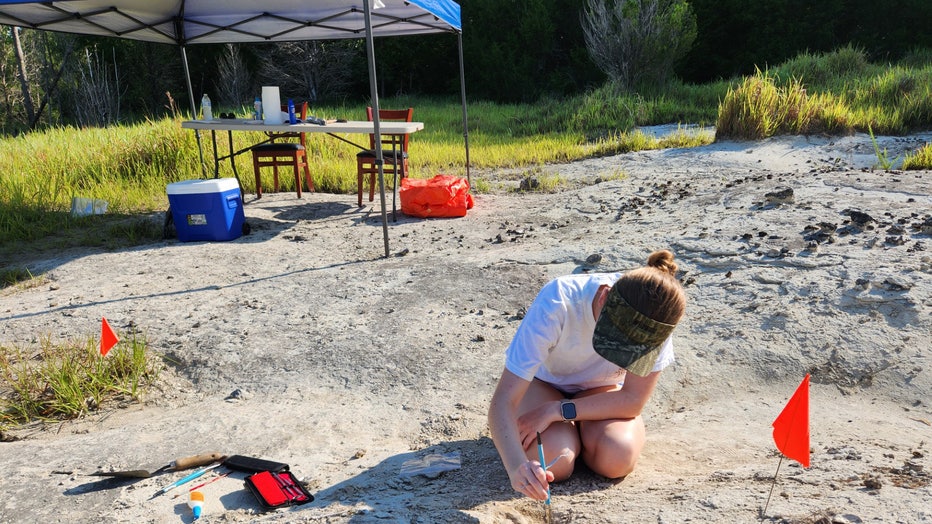
Lindsey Stallworth digs at the excavation site where they unearthed a prehistoric whale skull (Alabama School of Mathematics and Science)
Gentry used information from the U.S. Geological Survey and the Geological Survey of Alabama to estimate the skull’s age – about 34 million years old. Now, the skull’s home is at the Alabama School of Mathematics and Science, where Stallworth and her fellow students will work alongside Gentry to clean, repair and study the fossil whale.
"[Alabama is] a great place to be a paleontologist, and unfortunately we just don't have very many people here studying the fossils," Gentry said. "I'm very excited that now students like Lindsey and high school students here at ASMS now get to share in that, they get to take part in all of these great experiences."
Gentry, Stallworth and a small group of students will go back to the site next summer to try and unearth the rest of the skeleton, which Gentry said could be 15-20 feet long.
"Going back into that hill, we don't know how much of it is there," he said.
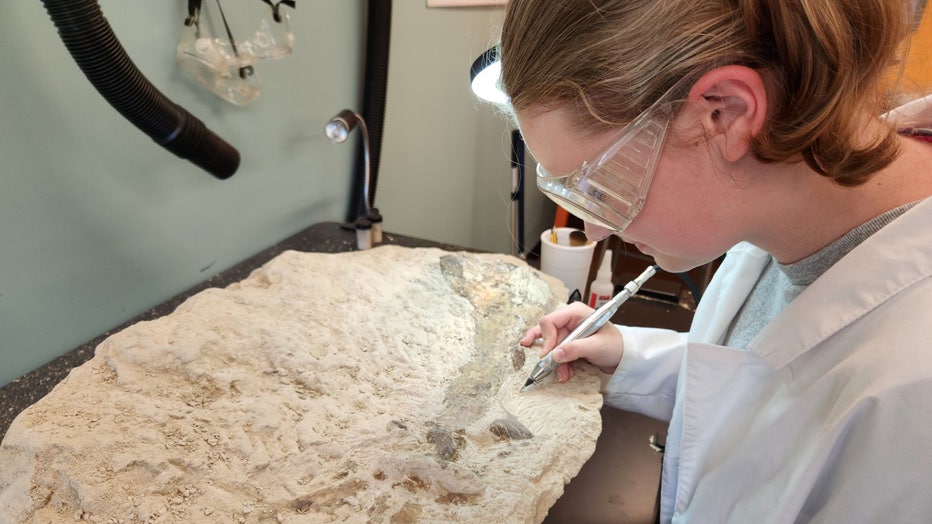
Lindsey works to repair the whale skull she discovered on an excavation at her family's Alabama farm (Alabama School of Mathematics and Science)
Before the big dig, Stallworth said she planned to study marine biology. Now, she’s more interested in a newer science: marine paleontology.
"So I can study all the animals that I love now, but what they used to look like 30 million years ago or even older or younger, and I can still interact with all of it, and I'm very seriously considering it," she said.
The Alabama School of Mathematics and Science is the state's only public, residential high school for sophomores, juniors and seniors pursuing advanced studies in math, science, computer science and the humanities. Tuition, room and board are free.

